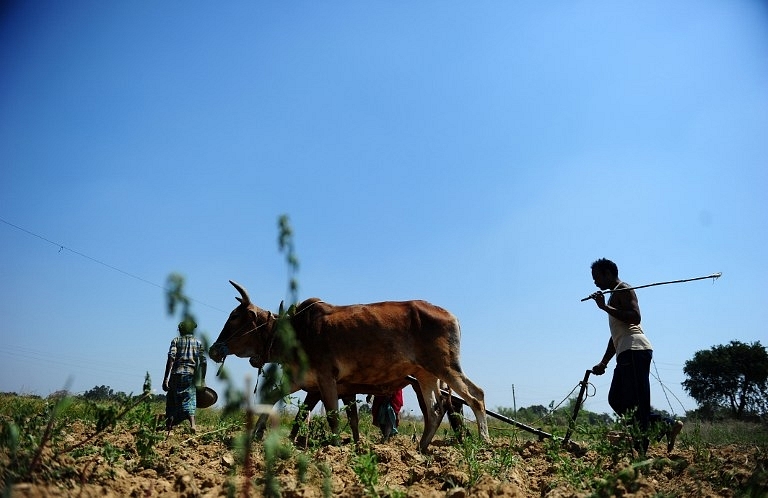
Bypassing Brokers In Agriculture
Farmers will no longer be required to route their produce to the market via APMC mandis where they could not realise the best prices for their produce. The market’s will now be open and online.
In a move that will significantly alter the sorry state of affairs in agricultural marketing, Prime Minister Narendra Modi recently proposed the creation of a national online market for agriculture. This would aim to connect farmers directly to the traders across the nation, thereby severely reducing the touch points with the middlemen.
It is unfortunate that India’s farm economy continues to face one of the major challenges that has impeded its progress for the past more than 60 years: State control. Take, for example, the area of agricultural marketing, which is more or less monopolised by regulated, government-owned mandis or markets.
This is because, under the Agricultural Produce Marketing Committee Act, the first sale of agricultural produce must occur only at these markets. Much has been written about how such a State-controlled marketing system exploits farmers by preventing them from procuring the right price for their produce, or how the various taxes and levies charged by these markets artificially inflate the prices of commodities sold through them.
The Economic Survey of 2014-15 noted, for example, that “the levies and other market charges imposed by states vary widely. Statutory levies/mandi tax, VAT etc. is a major source of market distortion. Such high level of taxes at the first level of trading has significant cascading effects on the prices as the commodity passes through the supply chain.”
Such unnecessary government intervention is not only unwarranted, but also unjust — to both farmers and end-consumers. The APMC Act was initially enacted by the government under the pretext of checking the exploitation of farmers by moneylenders and intermediaries. Whether it was justified back then is open to debate. But today it has zero relevance, given particularly the fact that better price discovery is possible owing to technological innovations and farmers need not fear being exploited by lenders.
Under the new policy, an amount of Rs 200 crore will be earmarked for creating the related infrastructure under the scheme called Agri-Tech Infra Fund, and states that wish to be a part of this will have to fulfil the necessary prerequisites. Some of them include a single license that will be valid across the state (presently, traders need multiple licenses for different APMC markets), single point levying of market fee, and provision of online auction facilities.
To be sure, the transactions would still be performed through the APMC markets. But trade is expected to increase as the farmers find access to more buyers across the nation, thus garnering increased revenue for the markets but also better prices for the farmers themselves.
It must be noted, however, that the state of Karnataka had pioneered the reform by creating a unified agricultural market in February 2014. Following the report of Agricultural Marketing Reforms Committee in 2013, which was headed by Additional Secretary Manoj Rajan, the state integrated 51 mandis in an online platform called Rashtriya e-Market Services Limited (ReMS). It is a joint venture between NCDEX Spot Exchange Limited and the state government. From the day of its launch till January of this year, transactions worth Rs. 15,000 crore had been done. The report rightly noted, “Integrating various markets transacting the same commodity supported by warehouses located in close proximity to the farm could eventually result in a better price for the farmer with minimum cost of transaction.” This proved to be a priescent statement.
A May 2014 report by The Hindu noted that the Tiptur market, which is located around 140 km from Bangalore, witnessed a staggering price increase in coconut by around 75 per cent compared to 2011, increasing the final payout to farmers by as much as 50 per cent. Another report showed that green gram prices in Gadag market increased by 40 per cent. Clearly, there are benefits of a unified market which are reflected in better price discovery by reducing the middlemen who earlier exploited the farmers by giving them a pittance for their produce.
In all, the move to create an integrated online platform for agricultural marketing is a step, albeit an incremental one, in the right direction. If executed successfully, it will spur investments in agriculture by farmers even as they procure the best price for their produce. It remains to be seen, however, whether this move is a precursor to greater, more radical agricultural reforms that include, among other things, demolishing the APMC markets altogether. After all, there is no justification for the government to dictate where or how two parties – in this case, the farmer and the end-consumer – involved in a voluntary trade choose to do business.